Thar Desert
The Thar Desert, also named the Great Indian Desert, is the blindsiding desert that covers more than 77,000 square miles of rolling dunes and is located in Asia. It is situated in India and Pakistan, containing 85% of the total area in India and 15% in Pakistan. Most of the desert is in Rajasthan of India, while in Pakistan, most are in Sindh province. However, it also extends to the Indian states of Haryana, Punjab, Gujarat, and the Pakistani province of Punjab. It is one of the most well-known deserts in Pakistan.
Location of Thar Desert Pakistan
The Thar Desert is located in the Tharparkar, Umerkot, and Mirpurkhas districts of the province of Sindh in Pakistan. From the metropolitan of Karachi, one can reach Tharparkar in six to eight hours. The roads leading to Thar are mostly paved to make tourist visit this place.
Thar Desert Climate
The climate of the Thar desert is defined by overindulgence. Winter temperatures approach near freezing because of foggy months, while in summer, temperatures reach up to 50°C making summer unbearable. Rainfall is limited to 100-500 mm, so it is an arid area.
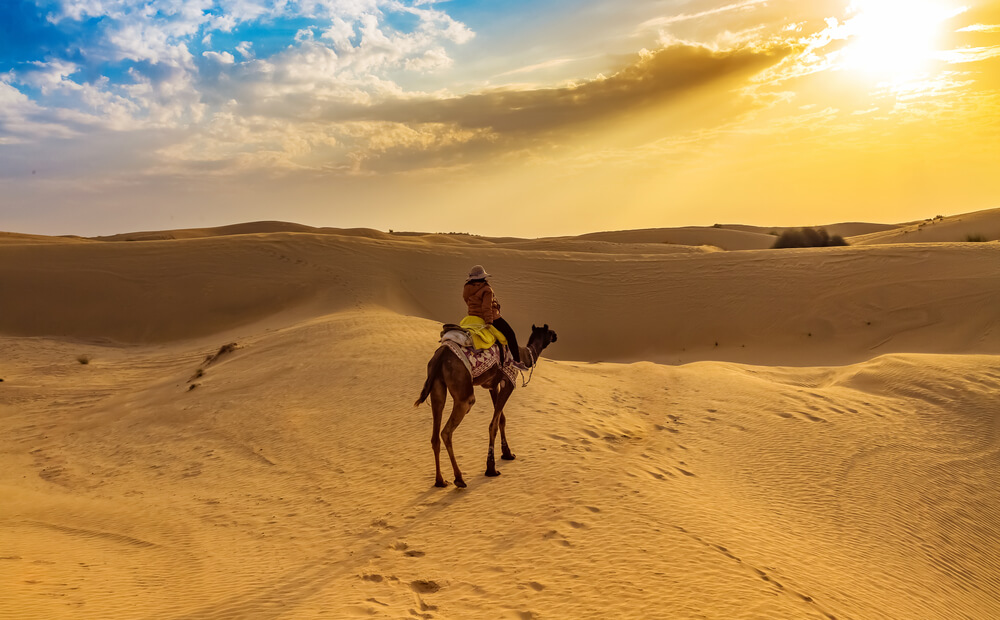
Geography of Thar Desert
The northeastern portion of the Thar Desert is amid the Aravalli Hills. Tharparkar expanses to Punjab and Haryana in the north, the Great Rann of Kutch along the shore, and the coastal plain of the Indus River in the west and northwest.
The Thar Desert is renowned for its stunning dunes present in the entire vastness of the desert and varies in height. Although dunes are present in all deserts of the world, the Thar desert has dunes with continual motion, which are not in any other area. The perpetual movement of the desert has prohibited permanent human settlement because the sands can easily be blown over buildings or cottages. The surrounding environment absorbs all monsoon clouds’ moisture, resulting in hot and dry winds in this desert. Severe winds mobile the sands, thus covering fertile soil, which hinders agricultural development. Several saltwater lakes are present, but humans can not drink this water. The media has consistently highlighted the extreme lack of drinkable water in the Thar desert of Sindh.
Why is it Called the Thar Desert?
The name Thar is derived from the term thul, which means the region’s sand ridges, so because of the high dunes of almost 500 feet, it is called the Thar desert.
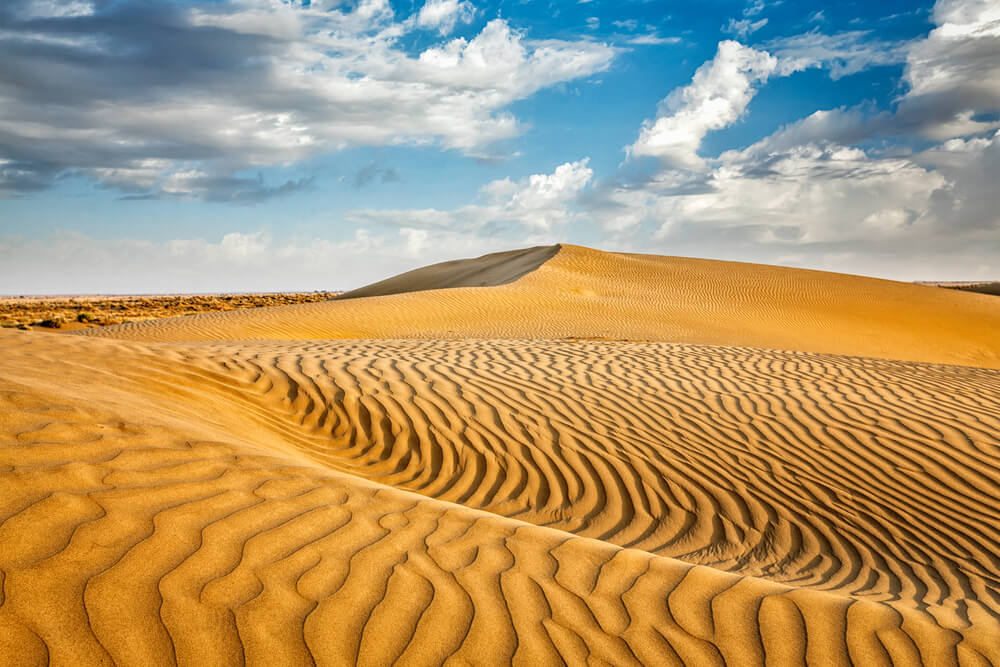
Most Immense Desert in Pakistan
The Thar Desert is spread over an expanse of 175,000 square kilometers and is the largest desert in Pakistan. It is the only subtropical desert in Asia and a central tourist attraction point. Moreover, It is the 16th largest desert on the earth and a stunning place in Pakistan where tourists come to enjoy the vastness of the desert.
When is the Best Time to Visit the Thar Desert?
The best season to visit the Thar Desert is between October to February because of the moderate temperature. In these months, the season provides medium heat while nights are chilly. It is advised not to visit it in summer because of the blazing sun at high temperatures with no water in the entire desert. It is silliness to travel to the Thar desert during hot months.
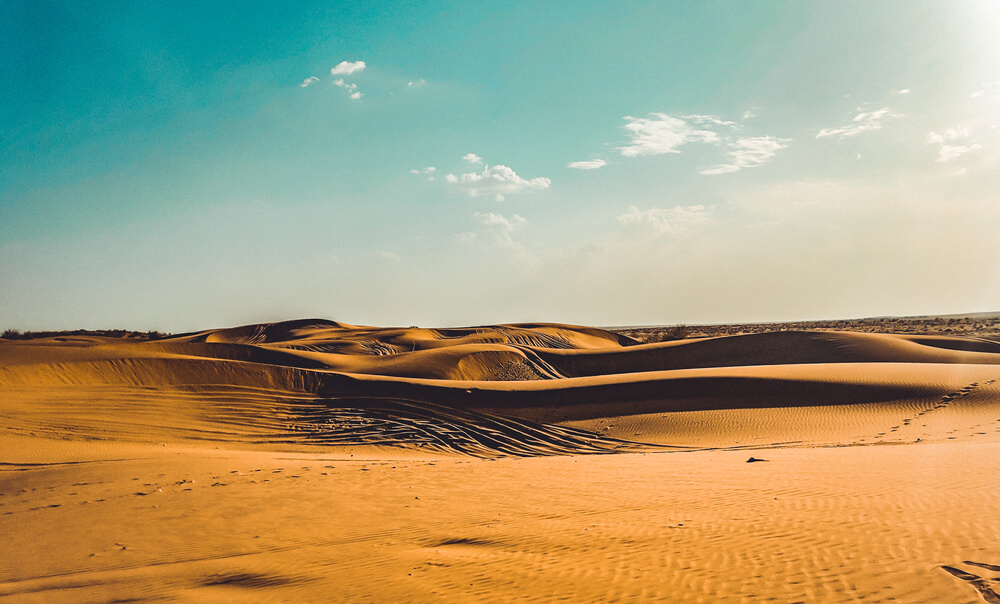
What Should be Packed to Visit Thar Desert?
It is wise to get prepared thoroughly before leaving your place to visit a tourist point. Some essential and mandatory equipment that everyone should buy to see Thar desert are:
- Backpack: A backpack of good quality is essential for keeping personal and vital belongings, and it will prevent damage to your cameras and mobile phones.
- Clothes For Trekking: Comfortable clothes for enjoying trekking in the Thar Desert are necessary. Hence buy clothes which are comfortable and don’t buy party dresses.
- Comfortable joggers: Joggers are also crucial for enjoying hiking in the vastness of that. So purchase good quality joggers that do not break easily; otherwise, you will face a difficult situation in the desert. Moreover, buying two pairs of joggers is suitable for using the other pair in case of a breakdown of the shoe.
- Face mask: Face masks are a good invention for avoiding the dust of the Thar Desert. So Buy and pack a face mask to protect your nose and throat from dust.
- Hat or headscarf: It is good to cover your head so that dust does not make your hair filthy.
- Protective gear: Protective gear such as sunblock and sunglasses are necessary for the Thar desert because flying dust can get into your eyes, causing invisibility and allergy. However, sunglasses will prevent the dust from moving into your eyes.
- Water bottle: Water bottles are necessary to prevent dehydration in the hot temperature of Tharparkar desert Sindh. Therefore, purchase and take a handy water bottle with you on your visit to Thar.
- Camping: Camping equipment is necessary to bring to the Thar Desert if you want to enjoy a good holiday or tour.
- First aid kits: Pack first aid kits and painkillers, as these are the things everyone needs in case of any mishap.
Things to Know Before Going to the Thar Desert:
The Thar Desert doesn’t offer luxury facilities for guests and tourists compared to other deserts in Pakistan. Don’t be frightened by the boonies because it is the best place to visit and offers stunning views. Camping kits and sleeping bags can provide a comfortable stay in Thar desert Sindh. Different beautiful and domestic animals are also there which you can see.
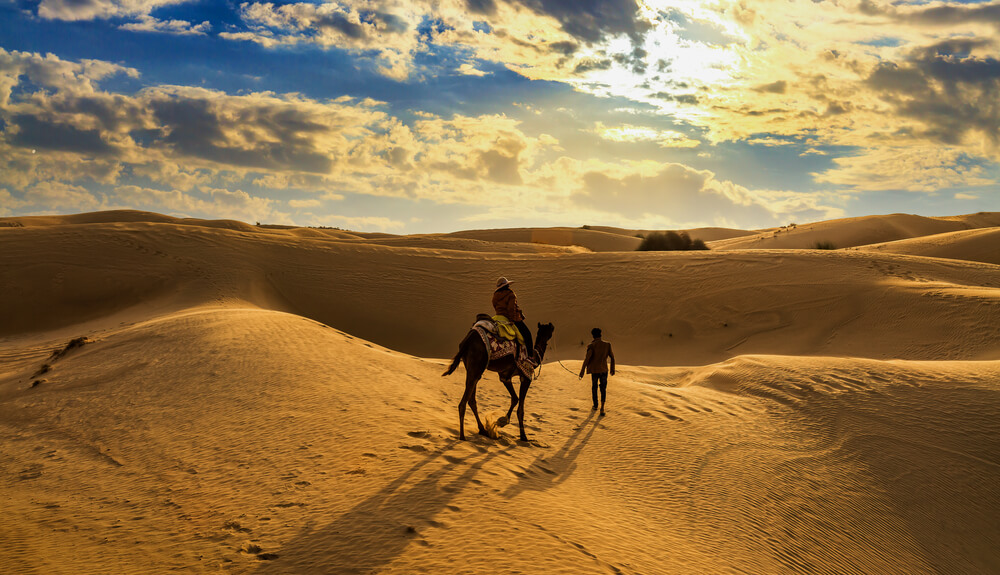
People visit Tharparkar because The remoteness and pin-drop silence at night in the Thar desert is the love of nature-loving people. Sunset and sunrise in the desert present a lovely view; everyone wants to catch this moment with their cameras.
Places to Visit in the Thar Desert
Mithi
It is the city and capital of Tharparkar District in Sindh, containing a majority population belonging to the Hindu religion. Places to visit in the area:
Gadhi Bhit is a historical monument in this area and an excellent place to visit.
Shree Krishna Temple is a religious building of Hindu and always has plenty of tourists from different regions of the world. Mabuhay is a small village about 15km south of Mithi city, having magnificent Pabuhar Tarai. Mabuhay Tarai is a beautiful natural pond that provides a lovely view. Café Thar is an attractive refreshment point in Mithi for all tourists. You can see and enjoy a look at Sindhi culture in this café.
Chelhar
Chelhar is a beautiful settlement in Sindh located 30 km east north of Mithi, with most people belonging to the Menghwar community. Beautiful places of Chelhar are given below:
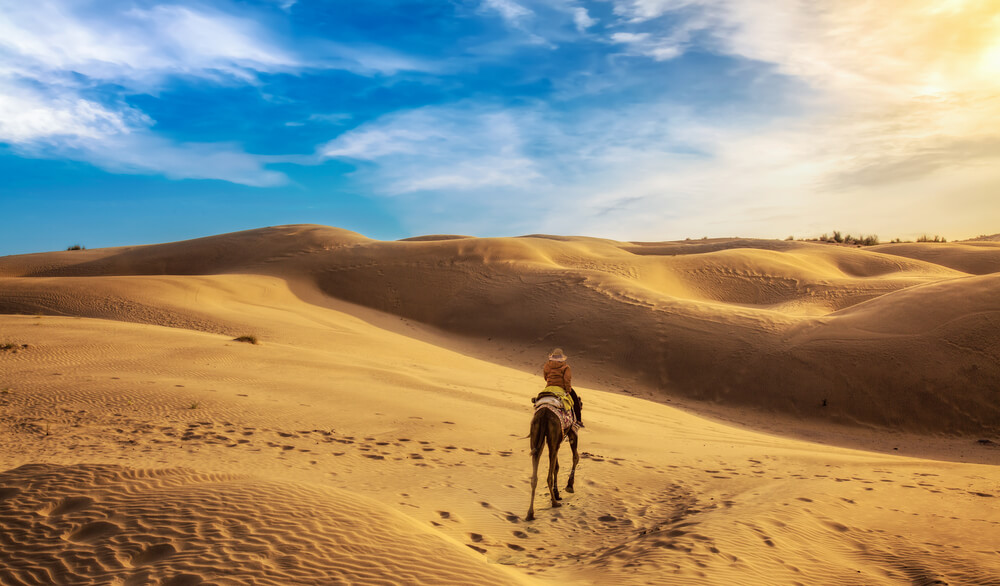
Ranasar is a striking seasonal pond near Chelhar, which attracts thousands of people in the rainy season. Raichand Rathore Library is also the best place to visit in Chelhar. Various temples in Chelhar are the presentation of the Hindu religion and culture.
Islamkot
Islamkot Tehsil is known as the Neem tree region because of the Hundreds of neem trees present here. Workers planted these trees during the chairmanship of Nihalchand Pabani. Its uniqueness makes it the best tourist attraction in Thar. Moreover, This tehsil has a beautiful Thar Museum, which visitors like to visit. Furthermore, Temple Nenuram is also a place to see, and here a three-day festival commemorating the death anniversary of Sant Nenuram occurs. Thar Coal Mines are also situated here, which everyone can see.
Nagarparkar
Nagarparkar is a tehsil at the base of the Karoonjhar Mountains in Tharparkar District contains the historic Churro Jabal Durga Mata Temple. Hindus visit Churrio Jabal Durga Mata Temple on the occasion of shivratrri. Centuries ago, Nagarparkar was under the sea. Several small dams have been constructed in this area to meet the water needs of nearby small villages. Karoonjhar mountains are also present in Nagarparka and are a good place for visiting and enjoying during holidays. This place provides a safe refuge for peacocks, endangered deer, jackals, wolves, and hyenas so that tourists can fascinate by the beautiful flora in these mountains. Bhudesar Mosque is also present in Nagarparkar. The white marble mosque of Bhudesar is built with magnificent allure to make people visit it. The style of the mosque was highly influenced by the design of nearby Jain temples. Sultan Mahmud Begada constructed this elegant mosque in 1505 CE.
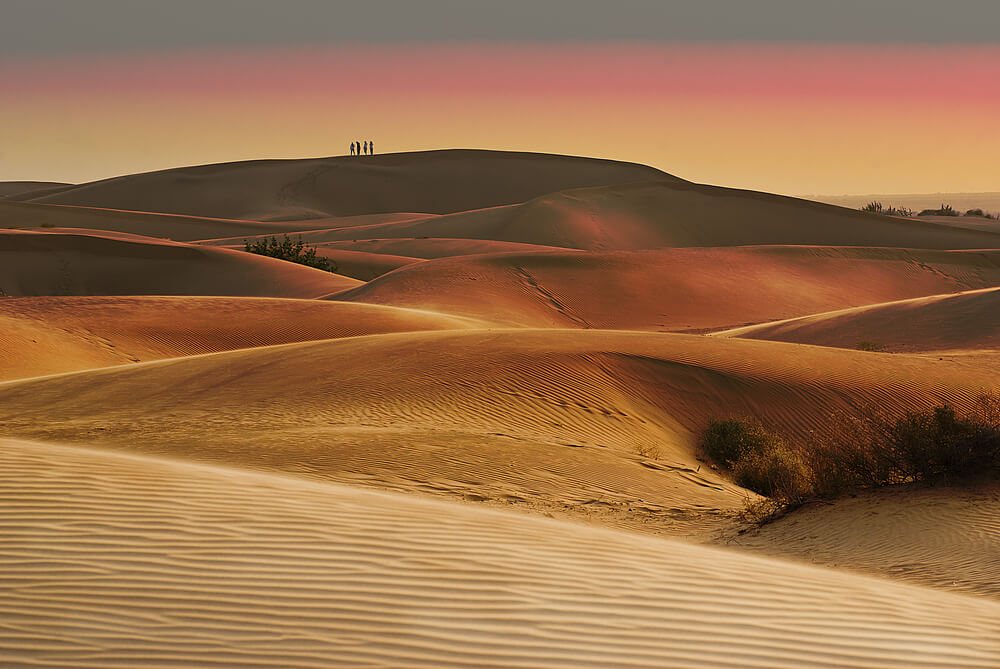
Things to Do at the Thar Desert
In addition to enjoying the beauty of the Thar desert, people can also enjoy various other activities in the vast area of the desert. In short, Thar desert provides a complete package of fun and enjoyment to the visitors reaching Thar desert.
Camping at Sand Dunes
Everyone can sit and enjoy camping anywhere in the dunes they love. After enjoying hiking or trekking in Thar, people want to rest, so camp is the best place. All can also stay in sleeping bags in camps at night.
Star-Gazing at Night
The sky looks clear at beautiful uninhabited places away from developed cities because developed cities have dirty environments that make the sky fade. Therefore, visitors can enjoy the total brightness of the stars in the desert. It feels good to gaze at the stars at night when there is no noise in the neighborhood.
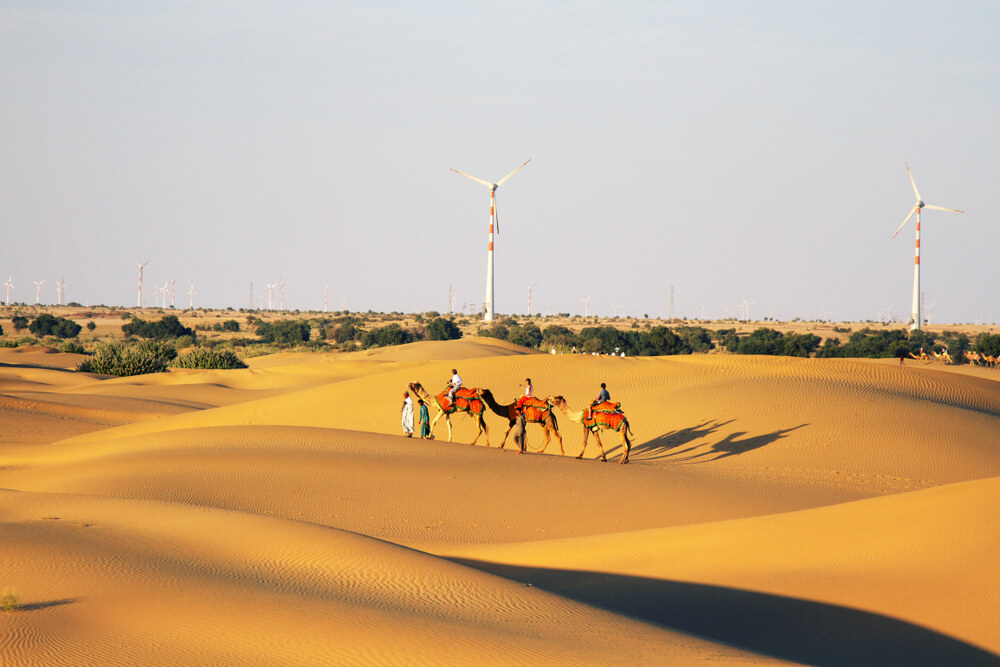
Camel Riding in the Desert
Camel riding is the enjoyment in whose search people come to visit deserts. Hence, Thar desert Sindh also offers camel riding opportunities that all can enjoy. Children love camel riding as they like animals, so riding on a camel fascinates them.
Economic Importance of Thar Desert
Thar is a tourist point, thus having practical importance in Pakistan’s economy. Tourists from other countries visit Thar, therefore purchasing things from there, increasing their sales and improving the province’s overall economy. Moreover, the Thar desert has a reserve of minerals such as feldspar, phosphorite, gypsum, and kaolin, which are essential for the development and economy of any country. These minerals are used to produce a range of stuff from cement to fertilizers exported to other countries, so it has valuable economic importance.
How to Reach the Tharparkar Desert?
The best way to reach the Tharparkar Desert is using a car or a four-wheel drive (4×4 jeep) for traveling. Ensure to take a person with you who can understand and speak the local language. It would be advantageous if the individual has already visited the Tharparkar so that you can get complete guidance from him. Residents well-acquainted with the region can help you explore the hidden beauty of the desert so choose them as your guide.
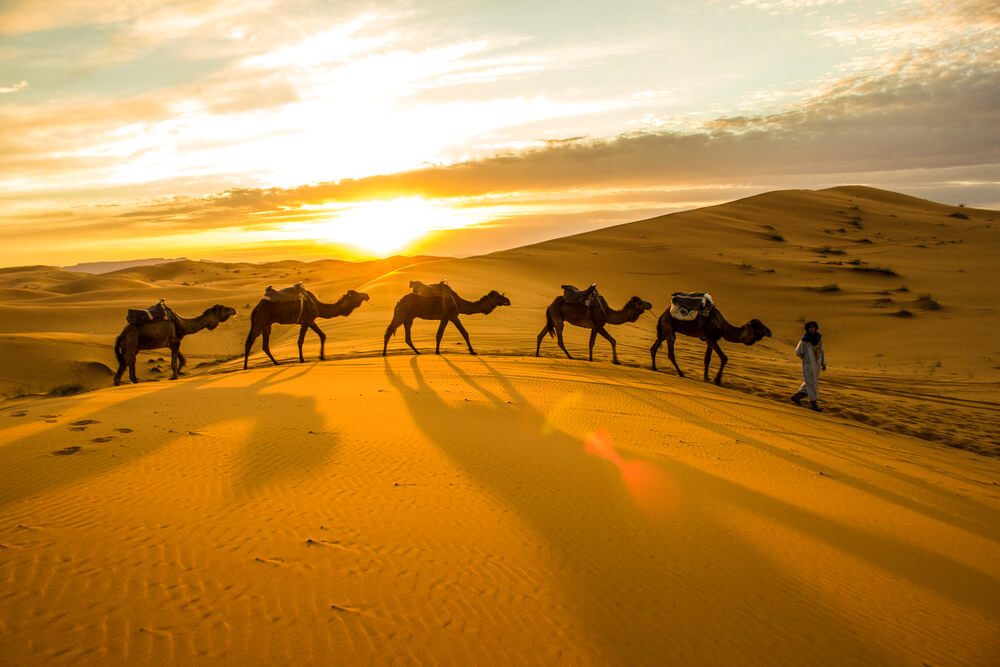
While some nomads choose their vehicles, you can also choose public buses for visiting nearby cities. Usually, the residents of the desert cover distance on camel carts inside the boundaries of the Tharparkar desert. Several tour agencies in Sindh provide guided tours to Tharparkar Sindh with accommodation and bare essentials, and it is good to explore the beauty with a group of people.
How Do People Survive in the Thar Desert?
The population in the desert is mostly poor, and their living means are the flocks of goats, cows, and buffaloes. These nomadic people live in small villages in small cottages or rough sand houses, and their towns are far apart. They keep moving from one place to another, i.e., in the non-rainy season, they travel to other areas of the country because of a lack of drinking water for them and their animals. However, they return to their cottages in the rainy season because the lakes get filled with water. The desert starts showing green scenery because of the growth of grass.
FAQs
How much of the Thar Desert is in Pakistan?
The Thar Desert, commonly known as the Great Indian Desert, is a dry area of sand hills in India. It is split between Punjab and Sindh (Sind) provinces in eastern Pakistan and Rajasthan state in northern India. The Thar area in Pakistan is 15%. The Thar Desert covers around 77,000 square miles (200,000 square km) of land. The Punjab Plain surrounds it to the north and northeast, the Aravalli Range to the southeast, the Rann of Kutch to the south, and the irrigated Indus River plain to the west. Because of the continual high pressure and subsidence at that latitude, the area has a subtropical desert climate. The summertime southwest monsoon winds that frequently bring rain to the subcontinent tend to bypass the Thar Desert.
Why is the Thar Desert important?
Thar desert Pakistan holds a lot of importance because of its many sanctuaries, such as:
The Nara Desert Wildlife Sanctuary covers 2,400 sq miles. It has the most significant number of Mugger crocodiles in Pakistan. The mugger crocodile is an endangered species of medium-sized, broad-snouted animal called the Marsh crocodile. It is native to freshwater bodies from the Indian subcontinent to southern Iran, where it lives in artificial points, rivers, lakes, and marshes.
The Rann of Kutch is another protected area in the Badin district. It has an area of 566 375 hectares and was declared a protected area in 1980 by the Sindh government. The sanctuary supports some of the world’s richest ecosystems, providing shelter to several wildlife species that can either be migratory or local.
This wildlife sanctuary is an important Ramsar site and bird area with various animals and plant species. Notably, it contains 22 species of plant, 20 reptiles and 12 species of birds, and 30 mammal species. Some of the most famous animals in the sanctuary are pelicans, Storks, peafowl, mallards, common teal, saker falcons, houbara bustards, flamingo desert wolf, blue bulls, and chinkara.
The desert also contains many dry thorny types of grass, shrubs, and trees, such as:
- Apluda aristata
- Dichanthium annulatum
- Panicum antidote
- Cenchrus
- Pennisetum
- Cymbopogon
- Elionurus spp.
- Prosopis juliflora
- Prosopis cineraria
- Capparis decidua
- Ziziphus nummularia
- Acacia Senegal
- Salvadora oleoides
Lal Sunhara national Park Bahawalpur is a diverse protected area in the third desert because it combines desert life and forest. It has a total area of 51368 hectares, of which 8491 are irrigated plantations, 40942 are dry land, and the remaining actors comprise lakes and ponds. Due to the diversity of the geographical locations, it gives home and food to many wild animals such as Asiatic wildcats, rabbits, bustards, dear, Indian cobra, wolf snake, Russell’s viper, spiny-tailed lizard, Griffon, vulture, laggard falcon, Sparrowhawk, Egyptian vulture, lark, and barn owl.
Is the Thar Desert hot or cold?
Thar desert is an arid region in the Indian subcontinent. It is the 19th largest desert in the world and has a dry climate. The subtropical desert has an average temperature with the season and can face climatic extremes from 50 degrees celsius in the summer to near freezing in winter. The average rainfall in the desert fringes from 100 to 500 mm annually. This only source of rain comes during the monsoon weather from July to September. The lack of water and moisture with an abundance of sunlight makes it very hot. With less moisture in the surroundings, there is the most negligible evaporation, which leads to the minimal amount of clouds that collectively make the desert a hot region.
What is the leading food of Thar Desert?
People in Thor wait for annual rainfall to grow some indigenous vegetables. People usually rely on millet, rice, and other pulses that can withstand the desert’s harsh conditions without going bad. Some of the areas of the deserts are plowed to cultivate maize millet and sorghum. Some of the most eaten vegetables that are indigenous to Thar are:
Small melon
Mushrooms
Amarnath
Panic grass
Ker
Peelu
Bagro
Watermelon
Caralluma.
Can you visit the Thar Desert?
Thar desert in Sindh province is a beautiful tourist attraction in Pakistan. The vastness of the desert attracts many people from around the world. Sandy dunes and the small hills of the Parker are also major draws for many people. Visiting the desert in the monsoon season is such a treat for visitors. The loyalty and hospitality of people are also one of the main reasons people love to visit the Thar desert. Once you get there, you will be amazed by the fashion sense of women wearing long embroidered skirts and tops in a routine. There are many mosques as well as temples in the desert that shows the diversity of faith of people in the desert. If you have to travel from one place to another in the desert, you can each arrive on the local Kekra bus.
Conclusion:
Tharparkar desert is the best place to enjoy holidays with family and friends. Visitors from other counties visit this place to see the beauty of the creation of Allah. All should visit this location to see the world’s exquisiteness and praise Allah for creating this beautiful world.
